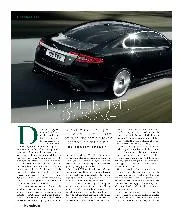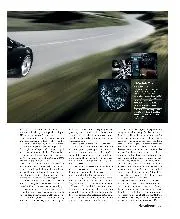

In tune, in time, on song
Jaguar has mated a great engine with a solid chassis to produce one of the quickest sporting saloons around By Andrew Frankel Driving a new Jaguar XFR is like being…
Formula 1 is grappling with a pandemic and its economic consequences, and it has reacted by delaying the new technical regulations by a year and has proposed a reduction in the budget cap for next season, from $175m to $150m.
But there is a feeling, probably well-founded, in several quarters that this won’t be enough. There is a push to get the budget cap down well below even the proposed reduction, which is yet to be ratified. The problem becomes intractable because getting the big teams of 1000 employees or more to contract down to the levels required is problematic.
Elsewhere, some of the smaller teams cannot reach the current cap, and would probably go bust if they did.
The most vociferous on the big team issue is Ferrari. It believes operating significantly below $150m would take it into the territory of redundancies, which it desperately wishes to avoid, especially with the current situation in Italy. But that’s just the Scuderia’s immediate point. There’s a bigger underlying problem: $150m is the sort of budget that could be available to independent teams such as McLaren or Racing Point (Aston Martin as of next year).
Those independent teams buy their components – most notably engines and gearboxes, but also suspensions and other listed parts – from the manufacturer teams at less than cost.
In theory, that would mean those independent teams with $150m at their disposal would be able to spend more on being competitive than the manufacturer teams, which have to pay fixed costs associated with the design, manufacture and R&D of all parts.
In this scenario, Ferrari suggests a McLaren or Racing Point could conceivably be at an unfair competitive advantage over it or Mercedes. Ferrari has suggested a two-tier budget cap for manufacturers and independents, with a baseline cap that can be added to for manufacturers. But Mercedes isn’t supportive of this idea and has expressed general agreement with the $150m cap.
“The fallout of the pandemic will be devastating for F1. But how much so? “
It could become an obscure argument, as McLaren’s Zak Brown said. “[The current situation] is potentially devastating to teams,” he told the BBC, “and if it’s enough teams – which doesn’t have to mean more than two – then it’s very threatening to F1 as a whole. Could I see – through what is going on right now in the world, if we don’t tackle this situation head-on very aggressively – two teams disappearing? Yeah, in fact, I could see four teams disappearing, if this isn’t handled the right way. And then, given how long it takes to ramp up an F1 team, and given the economic and health crisis we are in right now, to think there would be people lined up to take over those teams as there has historically been… I don’t think the timing could be worse from that standpoint. I think F1 is in a very fragile state at the moment.”
Nothing is under F1’s direct control at the moment. The economic consequences of the pandemic are sure to be devastating. But how much so? Like post-2008, when F1 lost Honda, Toyota, BMW and Bridgestone in quick succession? Or much worse, an entirely goalpost-changed world where the idea of budgeting around $150m for a motor sport programme is inconceivable?
Looking ahead into the next year or two, the crisis will likely be decided by how deep Liberty’s pockets are. It’s keeping payments to the teams – which are one year in arrears and so based on the full 2019 calendar – despite a drastically reduced current income. But next year, those team payments will be based on the devastated 2020 calendar.
Given how big of a proportion the payments from Liberty form in most team budgets, the commercial rights holder may have to extend credit to keep all the smaller teams alive.
As for the manufacturers, how big a priority will F1 be if their core product evaporates? With no commercial agreements in place beyond the end of this year, F1 will be nervous about the continued participation of Mercedes, Renault, Honda and Alfa Romeo – which acts only as a sponsor of the independent Sauber team.
It’s easy to imagine Ferrari continuing, such is the power of the brand and its intimate connection to F1. But Sauber and Williams survive as pure independents on a strictly commercial basis, the two Red Bull teams, Haas and Racing Point are funded by wealthy individuals and McLaren is owned by a Bahraini consortium. As with the budget cap, different circumstances mean there’s no ‘one size fits all’ answer to the impact of the pandemic.
F1’s extraordinary boom-time expansion of the late 1990s and early 2000s was always going to bring an existential crisis one day. It’s been wrestling with the problem since 2008, without really grasping it. A virus is set to reshape everything we thought we knew, and F1 is not immune.